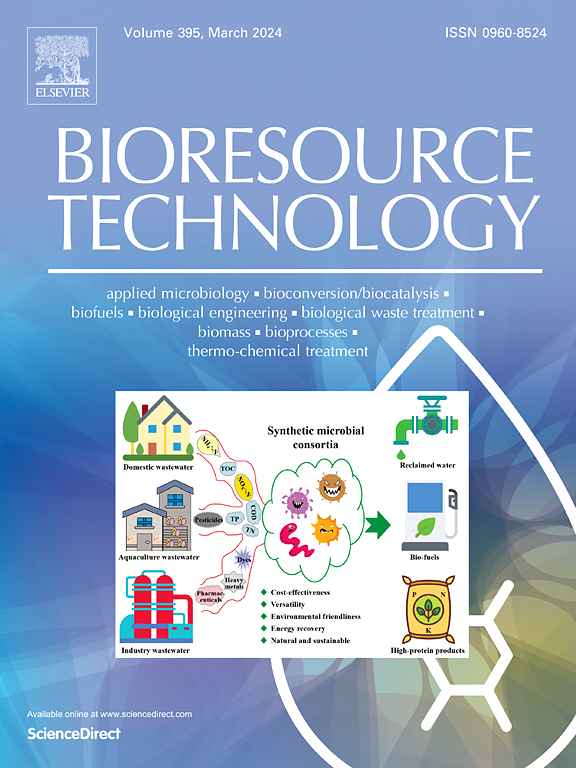Unlocking microbial community succession and key influencing factors during bioelectrocatalytically-driven simultaneous removal of ammonia nitrogen and sulfate from wastewater
IF 9.7
1区 环境科学与生态学
Q1 AGRICULTURAL ENGINEERING
引用次数: 0
Abstract
Ammonia nitrogen (NH4+-N) and sulfate (SO42−) removal by Anaerobic ammonium oxidation (Anammox) and sulfate-reducing bacteria (SRB) was studied in dual-chamber microbial electrolysis cells (MECs). Appropriate anode potential stimulation promoted biofilm formation and enhanced extracellular polymeric substances fluorescence, facilitating electron transfer. The highest NH4+-N removal (81.1 %) was achieved at the anode potential of 0.6 V vs. Ag/AgCl after 50 days, coinciding with the increase in electroactive Candidatus_Brocadia from 1.1 % to 27.4 %. Simultaneously, SO42− removal reached 77.0 %, supported by cathodic biofilms dominated by SRB (Desulfofustis, Desulfomicrobium, and Desulfatirhabdium). Automated machine learning and principal co-ordinates analysis identified the anode potential as the key factor shaping microbial ecology. The appropriate anode potential (0.4–0.6 V vs. Ag/AgCl) promoted cathodic sulfidogenesis, indirectly enhancing electron flow and supporting Anammox process at the anode. These findings demonstrate that MECs hold great promise for simultaneously enhancing anaerobic ammonia oxidation bacteria and SRB activities, enabling efficient NH4+-N and SO42− removal.

生物电催化同时去除废水中氨氮和硫酸盐的微生物群落演替及其关键影响因素
在双室微生物电解池(MECs)中研究了厌氧氨氧化(Anammox)和硫酸盐还原菌(SRB)对氨氮(NH4+-N)和硫酸盐(SO42−)的去除。适当的阳极电位刺激促进生物膜的形成,增强细胞外聚合物的荧光,促进电子转移。50天后,阳极电位为0.6 V /Ag /AgCl时,NH4+-N去除率最高(81.1%),与电活性Candidatus_Brocadia从1.1%增加到27.4%相一致。同时,在以SRB (Desulfofustis, desulfomicroum和Desulfatirhabdium)为主的阴极生物膜的支持下,SO42−去除率达到77.0%。自动机器学习和主坐标分析确定阳极电位是形成微生物生态的关键因素。适当的阳极电位(0.4 ~ 0.6 V vs. Ag/AgCl)促进了阴极硫生成,间接增强了阳极的电子流,支持了厌氧氨氧化过程。这些发现表明,mec在同时增强厌氧氨氧化细菌和SRB活性,实现高效去除NH4+-N和SO42−方面具有很大的前景。
本文章由计算机程序翻译,如有差异,请以英文原文为准。
求助全文
约1分钟内获得全文
求助全文
来源期刊

Bioresource Technology
工程技术-能源与燃料
CiteScore
20.80
自引率
19.30%
发文量
2013
审稿时长
12 days
期刊介绍:
Bioresource Technology publishes original articles, review articles, case studies, and short communications covering the fundamentals, applications, and management of bioresource technology. The journal seeks to advance and disseminate knowledge across various areas related to biomass, biological waste treatment, bioenergy, biotransformations, bioresource systems analysis, and associated conversion or production technologies.
Topics include:
• Biofuels: liquid and gaseous biofuels production, modeling and economics
• Bioprocesses and bioproducts: biocatalysis and fermentations
• Biomass and feedstocks utilization: bioconversion of agro-industrial residues
• Environmental protection: biological waste treatment
• Thermochemical conversion of biomass: combustion, pyrolysis, gasification, catalysis.
 求助内容:
求助内容: 应助结果提醒方式:
应助结果提醒方式:


